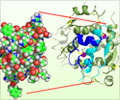Obesity, diabetes, and related disorders are driving the pandemic of fatty liver disease, revealed study. Patients with advanced fibrosis are more likely to die, after gastrointestinal haemorrhaging.

The team found that patients with advanced fibrosis are more likely to die, especially after gastrointestinal haemorrhaging or fluid accumulation in the abdomen and progressive deterioration of brain function due to the liver disease.
The results, published in the New England Journal of Medicine, confirmed that people who have very scarred livers are the most at risk for death.
"This is the first clear picture of the true rates of outcomes in those with (non-alcoholic fatty liver disease)," said Arun Sanyal, a liver disease specialist at VCU Health.
"And the study provides teeth to the recent American Diabetes Association guidelines to start screening for liver disease to make the screening more mainstream," he added.
Many people believe that only excess alcohol consumption causes liver diseases. However, a quarter of adults worldwide have non-alcoholic fatty liver disease, a condition where excess fat is stored in the liver and is more closely linked to obesity and diabetes than alcohol consumption. Most people don't know they have non-alcoholic fatty liver disease or are at high risk for it.
Advertisement
"Historically, many primary care physicians and diabetes specialists have felt that, because the roots of the disease lie in insulin resistance, then if we treat the diabetes we've already taken care of the problem," Sanyal said.
Advertisement
Source-IANS















